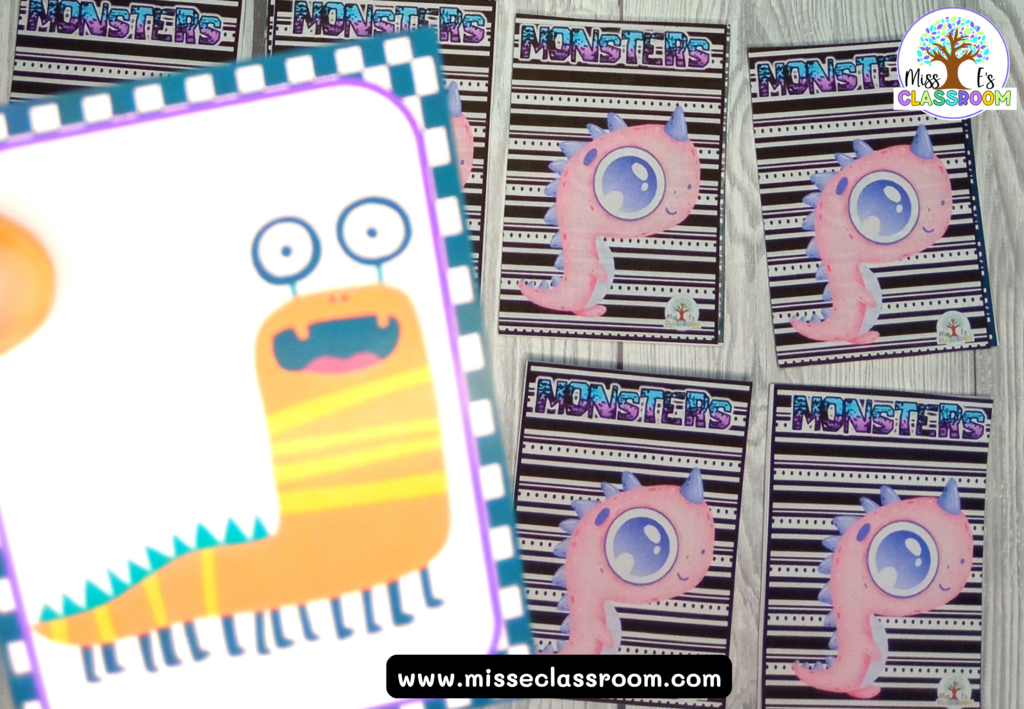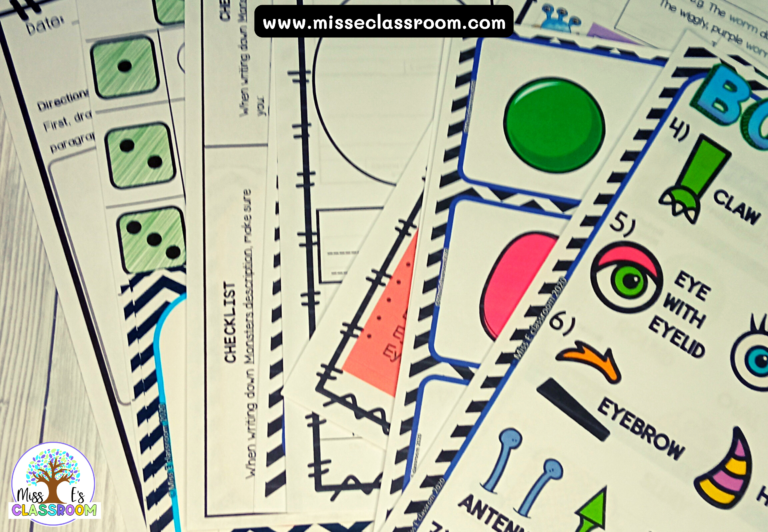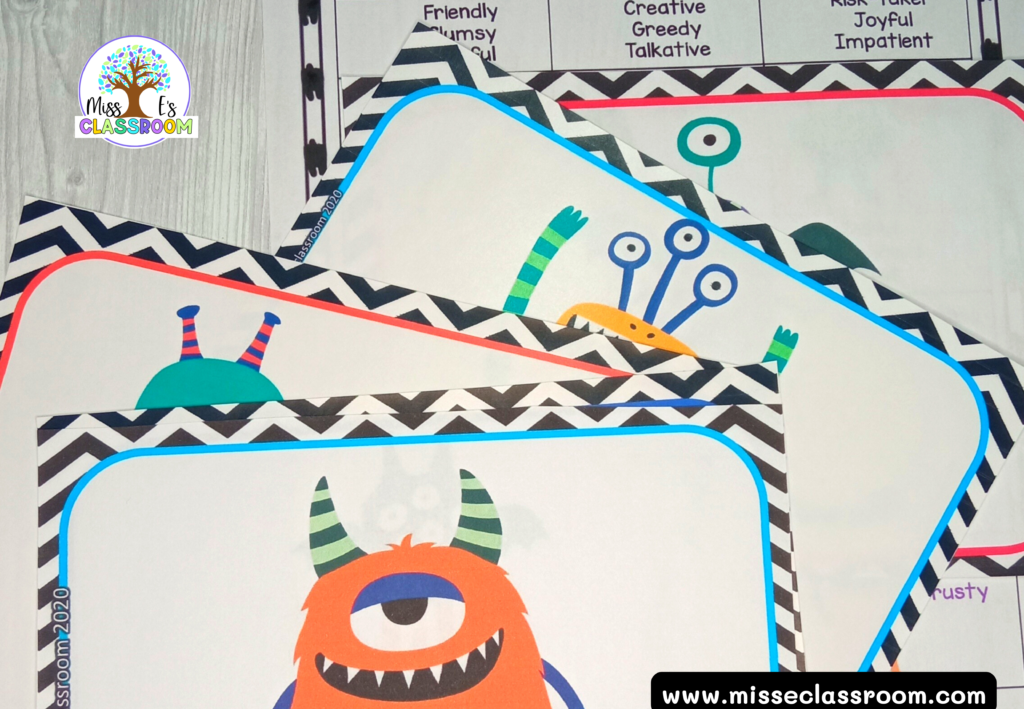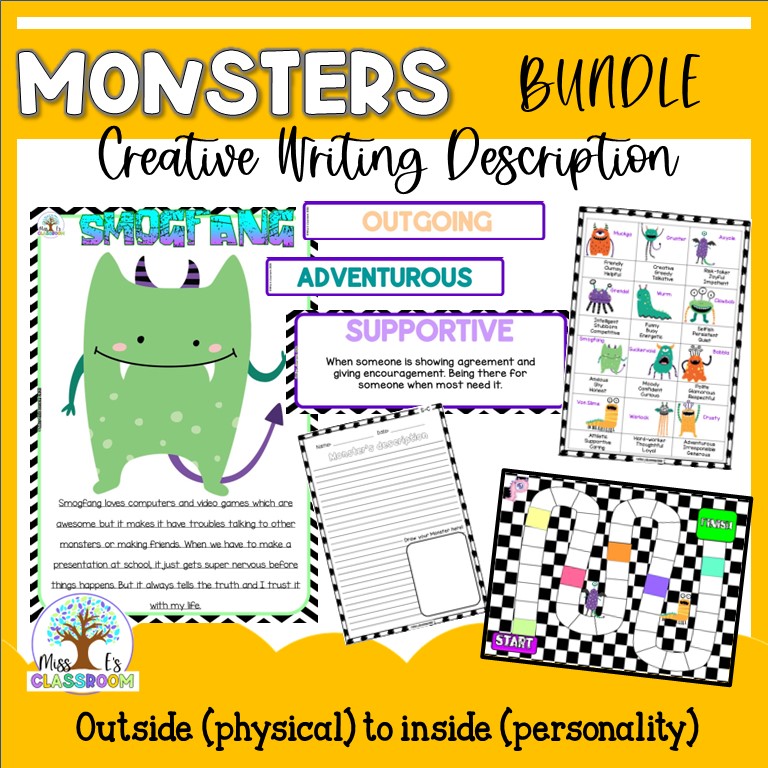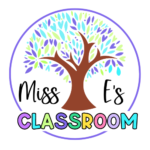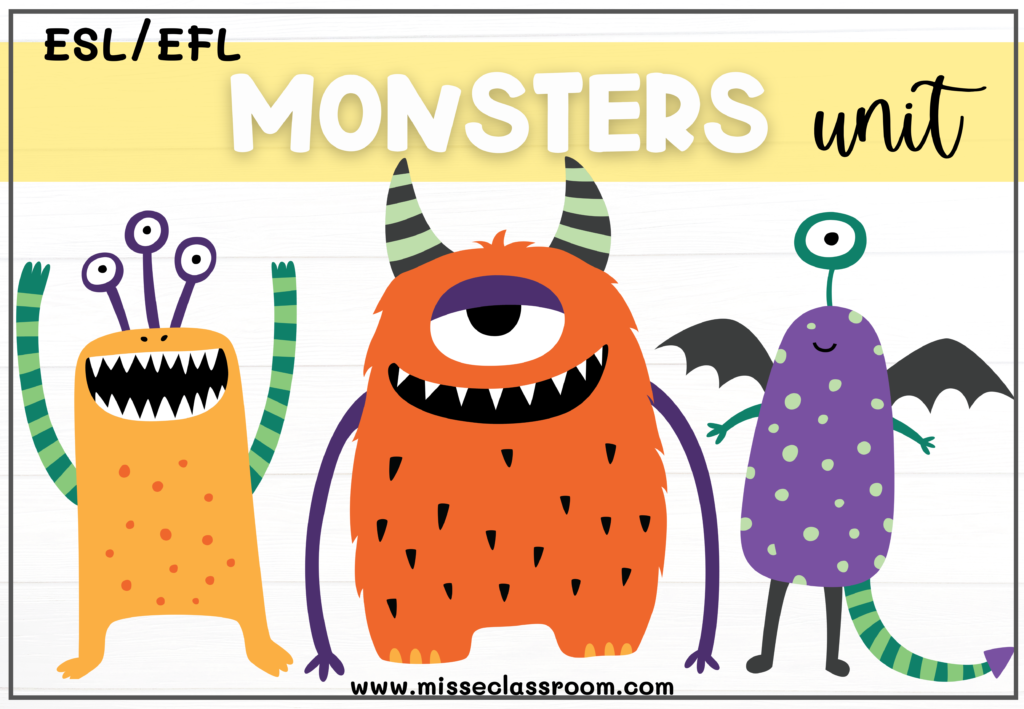
I used MONSTERS as the perfect excuse to create this whole unit, so we could have a “show and tell” where they would describe their favorite monster. The result wasn’t anything similar to what I intended though, because my planning took a monstrous turn I couldn’t anticipate.
Main Language goal: At the end of the unit, my students will be able to describe monsters in appearance & place of origin.
Level: 4th grade ESL.
The problem: I created a made-up story that could hook their attention and trigger their inner motivation.
(Please, feel free to steal this story for me! I tremendously appreciate that you let me know here or on Instagram how it went)
The story:
Anne was a 9-year-old girl living with both parents in an apartment; she started having bad dreams and felt something under her bed that didn’t let her sleep well. Her parents took the problem lightly, but she knew she was right. The following day, she found in her dad’s newspaper an advertisement for a Policeman claiming himself as a Monster’s police that could catch any monsters under beds or in closets. She felt great relief; she knew she wasn’t making that up, so she called him….
(I love pausing long because it makes my students and readers (I mean you!) drive their conclusions, questioning, and wondering at this point…. So, they are ALL welcome. I usually record this part to help me get the best of their impressions of the story so far).
-continue- so the police told her he couldn’t help her without a specific description of which monster was bothering her in her sleep. From that night up, she was careful of any shadow, clue, sneak under the blanket, or reflection in the mirror to see how that monster looked.
(At this point of the story, usually, students all tell you they have/used to have that same problem, to which I typically answer that all Monsters work in Monsters Inc, and most are more afraid of big, ugly humans than we are of them – to light the mood)
Introductions of Vocabulary.
In this resource pack, I covered all the vocabulary needed for the monsters; I even included a step-by-step guide on how to introduce things and when to do it, etc. Material for the teacher, for students, and a PowerPoint with animated slides are divided explicitly for you to manage without further preparation. There are also some banners included to decorate the bulletin board or classroom. However, if you have any questions, remember you can send me an e-mail or Dm me on my Instagram account.
Vocabulary and grammar practice will take a while, so I also include some worksheets to play entertainingly, plus extra practice until students feel comfortable making their sentences, failing, learning, and trying again. Reusing body parts vocabulary is handy, and slowly adding the vocabulary for specific monsters becomes a funny job.
Once they have that part consolidated, we start the writing production, which is the unit’s main focus; there are stages of difficulty to present. My students were thrilled about the unit, so much they talked about it at home, dining, and on school buses; other teachers wanted to live the same experience. So, it occurred to me that we could play something like a “PEN PAL” but with monsters; this way, all 4th graders could participate. My 4-A students wrote a monster’s description (only the description) to a random student from the 4-B; this other kid had to draw the monster according to that description and vice versa.
If they matched (drawing and description), they send a thank you letter back; if it didn’t, they send a correction letter for the drawing students to make the necessary adjustments.
As you can imagine, our students couldn’t sleep well those weeks, not because they had found an actual monster in their bedrooms, but because of the excitement of the anonymous pal they had in another classroom, of the uncertainty if their writing production could cause confusion and if they use the correct order of adjectives on the letters.
At that point, we knew (my colleague and I) that this was just the beginning of the unit, even though it was the final project. They were so excited; they wouldn’t let go of that unit yet. Ooopss! It looked like an excellent opportunity to keep working with adjectives, but this time, describing their monster’s personal traits.
I knew that the seed which it all started was ancient in history. Those initial creatures that inspired this unit were no longer in interest, and the story of Anne and the monster’s police was a terrific start that turned the story into a Monsters investigation kind of plot, so I re-wrote my unit language goals:
Main Language goal: At the end of the unit, my students will be able to describe monsters in appearance & trait so that no monster can be left behind.
The same monsters now have their own personality, likes, and interests. Therefore, we created texts that included that new view of the monsters, and to make it easier, a board game was adapted to practice and practice definitions of adjectives, and writing was in stages of difficulty until the final project. This time, they had to create different monsters using a dice but now describing it both: physically and personally.
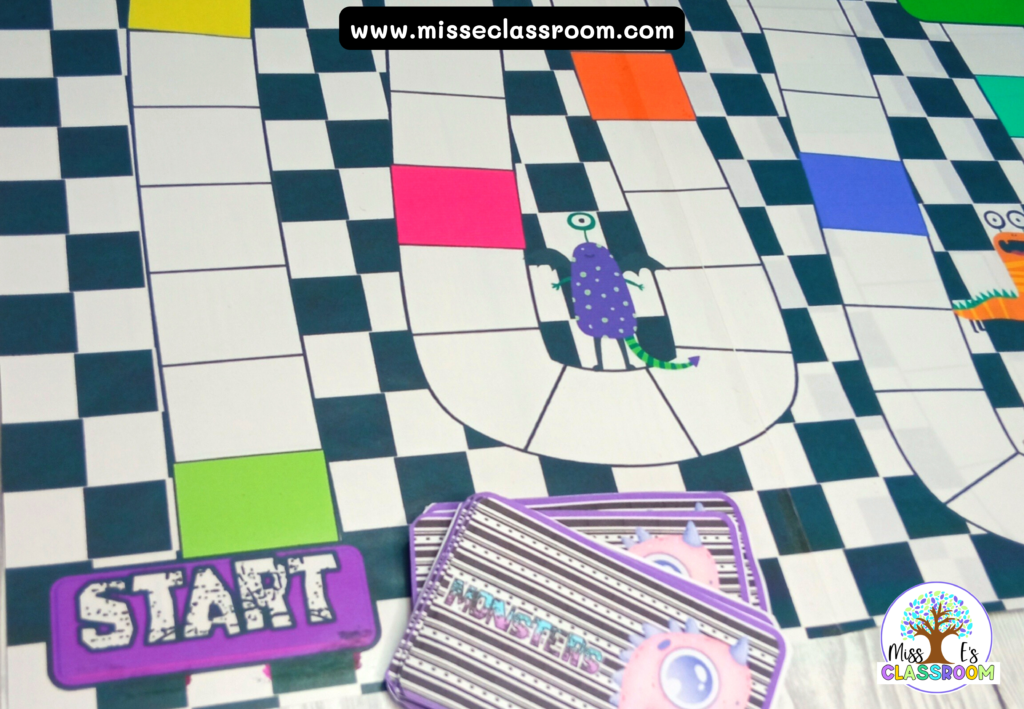
I have to be honest; I was exhausted, but they were thrilled. The school’s principal even installed a monster box (like a suggestion box) for all those extra letters they wrote describing monsters, teddy bears, toys, etc., for their pen pals.
This unit was a definite huge success! And I owe it to the “super things” creatures I still know nothing about. They also inspired this math card game to practice numbers that are lesser than or bigger than while catching the monster. It works fantastically on stations, but I printed 5 of them in my English classes and divided them into groups, ideal for fast finishers.
I hope you have enjoyed this crazy, bumpy ride as I did, and it helped your students love writing in English as much as mine discovered they do.
Remember that ALL my products before released to my store have been trialed and tested in different groups of students for at least 3 years.


